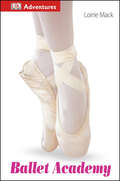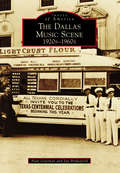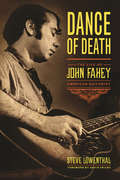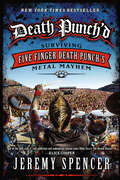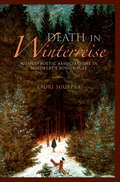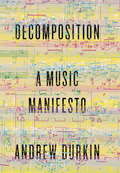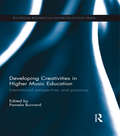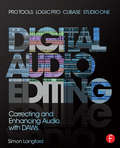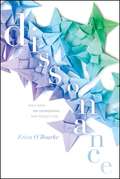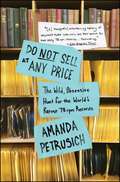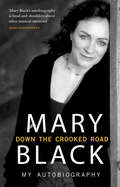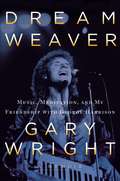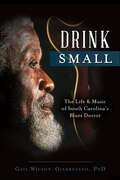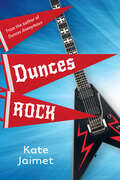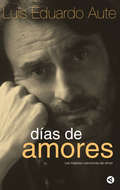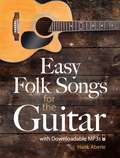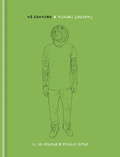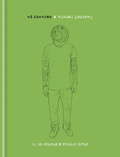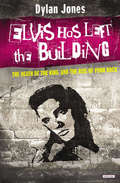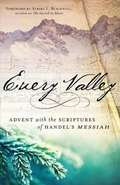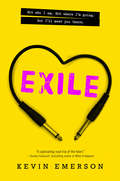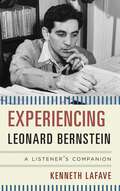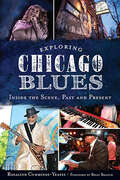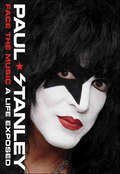- Table View
- List View
DK Adventures: Ballet Academy (DK Adventures)
by Lorrie MackLucy follows her dream to train to be a professional ballerina, and is selected as one of a handful of students into the Ballet Academy. Follow her journey as she gets through the tough training with the support of teachers and fellow students, and performs alongside her idol in The Nutcracker before facing her final challenge of getting into Ballet High School. DK Adventures are an innovative mix of narrative and nonfiction for kids ages 8-11 featuring engaging, action-packed stories that help kids build their skills in vocabulary, grammar, comprehension, and critical thinking while developing a love of reading. With diaries, recipes, poetry, instructions, graphics, or songs, the genre spreads in each DK Adventures title enhance the story and reinforce curriculum learning, while the expansive range of entertaining nonfiction subjects will appeal to boys and girls everywhere. Supports the Common Core State Standards.
Dallas Music Scene: 1920s-1960s, The
by Alan Govenar Jay BrakefieldFor much of the 20th century, Dallas was home to a wide range of vital popular music. By the 1920s, the streets, dance halls, and vaudeville houses of Deep Ellum rang with blues and jazz. Blind Lemon Jefferson was discovered singing the blues on the streets of Deep Ellum but never recorded in Dallas. Beginning in the 1930s, however, artists from Western swing pioneer Bob Wills to blues legend Robert Johnson recorded in a three-story zigzag moderne building at 508 Park Avenue. And from the late 1940s to the mid-1960s, a wrestling arena called the Sportatorium was home to a Saturday night country and rock-and-roll extravaganza called the Big "D" Jamboree.
Dance of Death: The Life of John Fahey, American Guitarist
by David Fricke Steve LowenthalJohn Fahey is to the solo acoustic guitar what Jimi Hendrix was to the electric: the man whom all subsequent musicians had to listen to. Fahey made more than 40 albums between 1959 and his death in 2001, most of them featuring only his solo steel-string guitar. He fused elements of folk, blues, and experimental composition, taking familiar American sounds and recontextualizing them as something entirely new. Yet despite his stature as a groundbreaking visionary, Fahey's intentions--as a man and as an artist--remain largely unexamined. Journalist Steve Lowenthal has spent years researching Fahey's life and music, talking with his producers, his friends, his peers, his wives, his business partners, and many others. He describes Fahey's battles with stage fright, alcohol, and prescription pills; how he ended up homeless and mentally unbalanced; and how, despite his troubles, he managed to found a record label that won Grammys and remains critically revered. This portrait of a troubled and troubling man in a constant state of creative flux is not only a biography but also the compelling story of a great American outcast.
Death Punch'd: Surviving Five Finger Death Punch's Metal Mayhem
by Jeremy SpencerA fascinating inside account of one of the most successful heavy metal bands of the past decade and a revealing personal journey through the wild highs and terrifying lows of rock 'n' roll from the cofounder of Five Finger Death Punch, Jeremy Spencer"Everything, including success, comes with a price."Hailed by the New York Times as "one of the most unexpectedly consistently popular bands," Five Finger Death Punch has become the heavyweight champ of the metal scene. In this soulful, inspiring, and entertaining memoir, Jeremy Spencer, the band's cofounder and drummer, takes us behind the scenes, on tour, and into the studio to tell the band's raucous story and his own.Death Punch'd is a detailed in-depth account of the group's origins and influences. With fierce honesty and self-deprecating playfulness, Jeremy details cutting the band's first demo and hitting the road to tour the world, providing snapshots of a life fueled by sex, booze, drugs, and a thrashing metal sound. He also reveals the fighting and tensions among highly opinionated musicians that grew increasingly out of control—battles that created both intense drama and the music fans love.In addition to pulling back the curtain on the band, Death Punch'd tells Jeremy's personal hard-charging, laugh-out-loud tale of how he left small-town Indiana with $150 in his pocket and rose to rock royalty—and how he nearly destroyed it all for a good time. Jeremy takes us back to his childhood in the eighties, introduces us to his down-to-earth family, and recalls adolescent exploits and a journey to addiction that landed him in rehab at sixteen—dangerous behavior that became bigger, bolder, and badder until Jeremy bottomed out before it was too late.Told in his unique, darkly humorous voice, filled with Jeremy's twisted take on how his rock 'n' roll dream turned nightmare, and including dozens of photos, Death Punch'd is a lively, no-holds-barred ride as well as a sincere and inspiring cautionary tale to help anyone who is struggling to battle demons and addictions of their own.
Death in Winterreise
by Lauri SuurpääLauri Suurpää brings together two rigorous methodologies, Greimassian semiotics and Schenkerian analysis, to provide a unique perspective on the expressive power of Franz Schubert's song cycle. Focusing on the final songs, Suurpää deftly combines textual and tonal analysis to reveal death as a symbolic presence if not actual character in the musical narrative. Suurpää demonstrates the incongruities between semantic content and musical representation as it surfaces throughout the final songs. This close reading of the winter songs, coupled with creative applications of theory and a thorough history of the poetic and musical genesis of this work, brings new insights to the study of text-music relationships and the song cycle.
Decomposition
by Andrew DurkinDecomposition is a bracing, revisionary, and provocative inquiry into music--from Beethoven to Duke Ellington, from Conlon Nancarrow to Evelyn Glennie--as a personal and cultural experience: how it is composed, how it is idiosyncratically perceived by critics and reviewers, and why we listen to it the way we do. Andrew Durkin, best known as the leader of the West Coast-based Industrial Jazz Group, is singular for his insistence on asking tough questions about the complexity of our presumptions about music and about listening, especially in the digital age. In this winning and lucid study he explodes the age-old concept of musical composition as the work of individual genius, arguing instead that in both its composition and reception music is fundamentally a collaborative enterprise that comes into being only through mediation. Drawing on a rich variety of examples--Big Jay McNeely's "Deacon's Hop," Biz Markie's "Alone Again," George Antheil's Ballet Mécanique, Frank Zappa's "While You Were Art," and Pauline Oliveros's "Tuning Meditation," to name only a few--Durkin makes clear that our appreciation of any piece of music is always informed by neuroscientific, psychological, technological, and cultural factors. How we listen to music, he maintains, might have as much power to change it as music might have to change how we listen.From the Hardcover edition.
Developing Creativities in Higher Music Education: International Perspectives and Practices (Routledge Research in Higher Education)
by Pamela BurnardThis is the first book to critically address the issue of how we can enhance and develop creativities in higher music education. It features new international, richly diverse perspectives on the nature and practice of creativities in different cultural and institutional contexts, in varying roles and in response to diverse professional pressures and expectations of artistic and educational achievement. This compelling and provocative book combines powerful social and educational commentaries and examples drawn from international sources based on original practices and experience of a diversity of creativities. The authors provide an important contribution by drawing attention to what is at the heart of all music and how we can understand and foster these multiple creativities at an individual and institutional level. It features new analyses of the question of creativities in higher music education, and offers illustrative and innovative examples of adaptive learning environments for teaching and learning creatively, considering the broader issue of the role of creativities in relation to educational policy in the context of increasingly interventionist governments and rapidly paced educational change. Topics covered include: -the conceptual tools for people to think about and debate multiple creativities -the role of creativities in higher music education-how musicians can develop multiple creativities in new ways -new approaches to teaching and learning for multiple creativities -what constitute leadership creativities in conservatoires and music departments-creativities at the interface of institutional learning cultures-assessing the multiple creativities of music. Developing Creativities in Higher Music Education offers a multi-disciplinary research and practice focus, which will be essential reading for anyone involved in higher education and industry sectors. The book will appeal to academics and practitioners in music, researchers, instrumental and vocal teachers, curriculum and policy developers and institutional managers who want to enrich the higher education experiences of their students and enable them to develop more of their creative potential. It is also ideal reading for undergraduate and postgraduate students of music education who are looking for an authoritative selection of writings that define the fields of musical creativities in one comprehensive volume.
Digital Audio Editing: Correcting and Enhancing Audio in Pro Tools, Logic Pro, Cubase, and Studio One
by Simon LangfordWhether you’re comping a vocal track, restoring an old recording, working with dialogue or sound effects for film, or imposing your own vision with mash-ups or remixes, audio editing is a key skill to successful sound production. Digital Audio Editing gives you the techniques, from the simplest corrective editing like cutting, copying, and pasting to more complex creative editing, such as beat mapping and time-stretching. You’ll be able to avoid unnatural-sounding pitch correction and understand the potential pitfalls you face when restoring classic tracks. Author Simon Langford invites you to see editing with his wide-angle view, putting this skill into a broad context that will inform your choices even as you more skillfully manipulate sound. Focusing on techniques applicable to any digital audio workstation, it includes break-outs giving specific keystrokes and instruction in Avid’s Pro Tools, Apple’s Logic Pro, Steinberg’s Cubase, and PreSonus’s Studio One. The companion websites includes tutorials in all four software packages to help you immediately apply the broad skills from the book.
Dissonance
by Erica O'RourkeIn this inventive romantic thriller, Del has the power to navigate between alternate realities—and the power to save multiple worlds.<P> Delancey knows for sure that there is more than one universe. Many more. Because every time someone makes a choice, a new, parallel world is spun off the existing one. Eating breakfast or skipping it, turning left instead of right, sneaking out instead of staying in bed—all of these choices create alternate universes in which echo selves take the roads not traveled. Del knows all of this because she’s a Walker, someone who can navigate between the worlds, and whose job is to keep the dimensions in harmony.<P> But Del’s decisions have consequences too. Even though she’s forbidden from Walking after a training session goes horribly wrong, she secretly starts to investigate other dissonant worlds. She’s particularly intrigued by the echo versions of Simon Lane, a guy who won’t give her the time of day in the main world, but whose alternate selves are uniquely interested. But falling for Simon draws Del closer to a truth that the Council of Walkers is trying to hide—a secret that threatens the fate of the entire multiverse.
Dissonance
by Erica O'RourkeIn this inventive romantic thriller, Del has the power to navigate between alternate realities--and the power to save multiple worlds.Every time someone makes a choice, a new, parallel world is spun off the existing one. Eating breakfast or skipping it, turning left instead of right, sneaking out instead of staying in bed--all of these choices create alternate universes in which echo selves take the roads not traveled. Del knows this because she's a Walker, someone who can navigate between the worlds, and whose job is to keep the dimensions in harmony.But Del's decisions have consequences too. Even though she's forbidden from Walking after a training session goes horribly wrong, she secretly starts to investigate other dissonant worlds. She's particularly intrigued by the echo versions of Simon Lane, a guy who won't give her the time of day in the main world, but whose alternate selves are uniquely interested. But falling for Simon draws Del closer to a truth that the Council of Walkers is trying to hide--a secret that threatens the fate of the entire multiverse."O'Rourke brilliantly builds an intricate and complex alternate science-fiction universe that contains beautiful imagery and visualization. A definite page-turner." --School Library Journal
Do Not Sell At Any Price
by Amanda PetrusichThe untold story of a quirky and important subculture: The world of 78rpm records and the insular community that celebrates them--by acclaimed music critic and author Amanda Petrusich, who contributes regularly to Pitchfork, The Oxford American, and The New York Times.Before MP3s, CDs, and cassette tapes, even before LPs or 45s, the world listened to music on 78rpm records--those fragile, 10-inch shellac discs. While vinyl records have enjoyed a renaissance in recent years, good 78s are exponentially harder to come by and play. A recent eBay auction for the only known copy of a particular record topped out at $37,100. Do Not Sell at Any Price explores the rarified world of the 78rpm record--from the format's heyday to its near extinction--and how collectors and archivists are working frantically to preserve the music before it's lost forever. Through fascinating historical research and beguiling visits with the most prominent 78 preservers, Amanda Petrusich offers both a singular glimpse of the world of 78 collecting and the lost backwoods blues artists whose 78s from the 1920s and 1930s have yet to be found or heard by modern ears. We follow the author's descent into the oddball fraternity of collectors--including adventures with Joe Bussard, Chris King, John Tefteller, Pete Whelan, and more--who create and follow their own rules, vocabulary, and economics and explore the elemental genres of blues, folk, jazz, and gospel that gave seed to the rock, pop, country, and hip-hop we hear today. From Thomas Edison to Jack White, Do Not Sell at Any Price is an untold, intriguing story of preservation, loss, obsession, art, and the evolution of the recording formats that have changed the ways we listen to (and create) music.
Down the Crooked Road: My Autobiography
by Mary BlackFor the last thirty years, singer Mary Black has been a dominant presence on the Irish music scene, an award-winning artist with many bestselling albums to her name. Now, in this long-awaited memoir, Mary takes us back to the roots of her musical heritage and to the influences that helped to shape her as an artist and a woman. Born into a musical family, Mary Black – a feisty tomboy who could hold her own when it came to sparring with her brothers and anyone else brave enough to take her on – began singing folk songs from the age of ten. Music played an important role in the family home and, performing with her brothers and her sister Frances, Mary built her highly successful career on the bedrock of these early years. From the pubs and clubs of her hometown, Dublin, she went on to perform in some of the most prestigious venues across the world. Always committed to exploring new material from the best writers, her unique talent attracted acclaim from critics, fellow artists and the public alike. It also led to a host of bestselling albums, including the multi-platinum No Frontiers, which spent more than a year in the Irish Top 30. Mary’s love of singing was matched only by the love she had for her family. As she recalls the inevitable tensions that arose when trying to juggle family life and a high-profile career, she tells of her struggle to combine the two contrasting aspects of her life. It was only through gritty determination, hard work and a fair amount of laughter that Mary was able to enjoy major success as an artist and, at the same time, raise a close and loving family with her husband Joe. Refreshingly honest, and written with warmth and humour, Down the Crooked Road offers a unique insight into the life and career of one of our most gifted singers – an artist who, during the course of her long career, has captured the hearts of millions around the world.
Dream Weaver: A Memoir; Music, Meditation, and My Friendship with George Harrison
by Gary WrightMusic legend Gary Wright reflects on his professional collaboration, friendship, and spiritual journey with "quiet Beatle" George Harrison. Best known for his multiplatinum hits "Dream Weaver" and "Love is Alive," Gary Wright came to prominence as a singer and songwriter during the golden age of rock in the 1970s. What is not as well known to the public, however, is Wright's spiritual side. At the heart of this memoir is the spiritual conversion and journey that Wright experienced alongside his close friend George Harrison. Until Harrison's death in 2001, the two spent decades together writing songs, eating Indian fare, talking philosophy, and gardening. In addition to featuring lyrics to a never-released recording of a song cowritten by Wright and George Harrison in 1971, titled "To Discover Yourself," this memoir includes a cache of never-before-seen photos. Also available is a deluxe e-book featuring an audio recording of "To Discover Yourself."
Drink Small: The Life & Music of South Carolina's Blues Doctor (Music Ser.)
by Gail Wilson-Giarratano PhDFor fans of the blues, Drink Small is synonymous with South Carolina. Drink rose from the cotton fields of Bishopville to become a music legend in the Palmetto State and beyond. The self-taught guitarist has written hundreds of songs and recorded dozens of albums spanning the genres of country, blues, folk, gospel and shag. The success of that music allowed him countless honors, such as playing the stages of the Apollo and Howard Theaters, touring with legendary R&B singer Sam Cooke and playing the best blues festivals in the world. He even developed his own philosophy: Drinkism. Author Gail Wilson-Giarratano details the dream, the music and the life that created the Blues Doctor.
Dunces Rock
by Kate JaimetThe Dunces—Josh, Magnolia, Wang and Wilmot—are back, and this time they’re going up against a formidable foe: Principal Hale, who has canceled their school’s drama and music program just when Wilmot needs it most. He has a guitar (given to him by a teen named Headcase), but no teacher and nowhere to practice (his dad hates rock ’n’ roll). The Dunces’ plan to convince Principal Hale to reinstate the program involves Josh’s reluctant participation in a hockey team, Magnolia’s enthusiastic role-playing and Wang’s disillusionment with a suspicious character named Hui Bing (aka Larry). But can the Dunces really rock, even when they rebrand themselves as Cousin Willy and the Wang Dang Doodles?
Días de amores: Las mejores canciones de amor
by LUIS EDUARDO AUTEEl amor ha sido y sigue siendo uno de los motores de la vida de Luis Eduardo Aute. Por este motivo reúne en este libro sus grandes canciones de amor, que son, en realidad, sus Días de amores, pues son el reflejo de su trayectoria vital. Luis Eduardo Aute canta al amor, pero al amor concebido como un misterio, una pregunta o una duda que estimula, unas veces visto como un estado mágico alcanzado por el ser humano y otras como una forma única, virtuosa, a la que canta y escribe en busca de argumentos; el amor como punto de partida y de llegada de toda una obra. El impulso de Aute por buscar, preguntar y escudriñar posibilidades expresivas que le permitan acercarse a la belleza y al lado desconocido de las cosas es lo que le ha llevado a hablar del amor en sus canciones sin renunciar a la ironía, al humor, a la tristeza más devastadora o a un lenguaje coloquial en contacto con la realidad de su momento.
Easy Folk Songs for the Guitar with Downloadable MP3s
by Hank AberleThis original collection presents more than 20 popular folk songs that have been specially arranged for beginning guitarists. The timeless melodies are supplemented with a helpful tutorial on guitar basics that offers tips on identifying the strings, tuning, and basic chord patterns and strums.These arrangements of Skip to My Lou, He's Got the Whole World in His Hands, Oh! Susanna, Down in the Valley, Barbara Allen, and other tunes include advice for following the time signatures, strumming patterns, and other suggestions. Best of all, each song features a free MP3 download for students to listen to and play along with. The recordings will familiarize beginning guitarists with the pieces' melodies and tempos, and provide practical guidance for playing these beloved folk songs.
Ed Sheeran: A Visual Journey
by Phillip Butah Ed Sheeran Sheeran)With words by Ed Sheeran and illustrations by his childhood friend, artist Phillip Butah (who produces artwork for Sheeran's albums and singles), and accompanying photos, Ed Sheeran: A Visual Journey is an exclusive, fully authorised, first-person account by Ed of how he became an internationally renowned singer-songwriter.In the book, Ed explores his early musical experiences and influences as well as his time recording and touring, right up to the release of his second album, 'x'. The book reveals what drives and inspires Ed as he continues to evolve as an artist, while coping with stratospheric success, and is an honest account of what it takes to make it in the music business.With Phillip Butah's distinctive portraits of Ed throughout, this is a unique book celebrating a unique musician. It includes Ed's recollections of working tirelessly on the London gig circuit and self-releasing EPs, working hard on finding his sound, signing to Asylum Records and recording his huge hit album, '+', performing at the Grammys, touring with Taylor Swift and sell-out headline gigs at Madison Square Garden. It takes us up to Ed as a musician today, including recording his new album, 'x'.
Ed Sheeran: A Visual Journey
by Phillip Butah Ed Sheeran Sheeran)**This enhanced edition includes behind-the-scenes videos of the making of the book and an exclusive message from Ed.** With words by Ed Sheeran and illustrations by his childhood friend, artist Phillip Butah (who produces artwork for Sheeran's albums and singles), and accompanying photos, Ed Sheeran: A Visual Journey is an exclusive, fully authorised, first-person account by Ed of how he became an internationally renowned singer-songwriter. In the book, Ed explores his early musical experiences and influences as well as his time recording and touring, right up to the release of his second album, 'x'. The book reveals what drives and inspires Ed as he continues to evolve as an artist, while coping with stratospheric success, and is an honest account of what it takes to make it in the music business. With Phillip Butah's distinctive portraits of Ed throughout, this is a unique book celebrating a unique musician. It includes Ed's recollections of working tirelessly on the London gig circuit and self-releasing EPs, working hard on finding his sound, signing to Asylum Records and recording his huge hit album, '+', performing at the Grammys, touring with Taylor Swift and sell-out headline gigs at Madison Square Garden. It takes us up to Ed as a musician today, including recording his new album, 'x'.
Elvis Has Left the Building: The Death of the King and the Rise of Punk Rock
by Dylan Jones&“An interesting look at how 1977 marked the explosion of punk alongside this heartbreaking (though not altogether surprising) loss of a legend&” (USA Today). In the late 1970s, punk music was setting out to destroy everything Elvis Presley had come to represent. But punk couldn&’t destroy The King himself—he had already done that, succumbing to his excesses at Graceland on August 16, 1977. Ever since, Elvis has permeated the world in ways that are bizarre and inexplicable: a pop icon while alive, he has become almost a religious icon in death, a modern-day martyr crucified on the wheel of drugs, celebrity culture, junk food, and sex. In Elvis Has Left the Building, Dylan Jones takes us back to those heady days around the time of his death and the simultaneous rise of punk. Evoking the hysteria and devotion of The King&’s numerous disciples and imitators, Jones offers a uniquely insightful commentary on Elvis&’s life, times, and outrageous demise. Recounting how the artist single-handedly changed the course of popular music and culture, he also delves deep into the cult of The King and reveals what Elvis&’s death meant—and still means to us today. &“I&’m not sure punk would have existed without [Elvis]. In fact I&’m not sure a lot of things would have existed without him. Dylan Jones is the right man to ponder such questions.&” —Bono &“A gripping tale of impossible success and terrible waste and lost beauty that veers from Memphis to Las Vegas and all the way to the broken backstreets of London.&” —Tony Parsons, author of The Hanging Club
Every Valley
by George Frideric HandelGeorge Frederic Handel wrote his most famous oratorio, Messiah, in a little over three weeks. There is little doubt that this work is one of the most famous and often performed choral pieces in history. Handel conducted many performances in his day and there never seemed to have been a period when the work was not played. These selections feature the tenor voice of the quintet - the euphonium (or trombone).
Exile: Exile #1
by Kevin EmersonKevin Emerson's Exile combines the swoon-worthy romance of a Susane Colasanti novel with the rock 'n' roll of Eleanor & Park. Summer Carlson knows how to manage bands like a professional--minus the whole falling-for-the-lead-singer-of-the-latest-band part. But Caleb Daniels isn't an ordinary band boy--he's a hot, dreamy, sweet-singing, exiled-from-his-old-band, possibly-with-a-deep-dark-side band boy. She also finds herself at the center of a mystery she never saw coming. When Caleb reveals a secret about his long-lost father, one band's past becomes another's present, and Summer finds it harder and harder to be both band manager and girlfriend. Maybe it's time to accept who she really is, even if it means becoming an exile herself. . . .
Experiencing Leonard Bernstein: A Listener's Companion
by Kenneth LaFaveLeonard Bernstein is a household name. Most know him for his classic musical reworking of Shakespeare’s Romeo and Juliet as Broadway’s West Side Story. But Bernstein accomplished so much more as a composer, and his body of work is both broad and varied. He composed ballets (Fancy Free, Facsimile, Dybbuk), operas (Trouble in Tahiti, Candide, A Quiet Place), musicals (On the Town, Wonderful Town), film scores (On the Waterfront), symphonies, choral works, chamber music pieces, art songs, and piano works. In Experiencing Leonard Bernstein: A Listener’s Companion, Kenneth LaFave guides readers past Bernstein’s famously tortured personal problems and into the clarity and balance of his Serenade after Plato’s Symposium for Violin and Orchestra, the intense drama of his music for On the Waterfront, the existential cosmography of his three symphonies, and his vibrant works for the musical stage. Perhaps the most famous American classical musician born in the twentieth century, Bernstein divided his time between c
Exploring Chicago Blues: Inside the Scene, Past and Present (Music Ser.)
by Rosalind Cummings-YeatesDiscover the living legacy of Chicago Blues in this guide to the iconic clubs and musicians who made—and keep making—music history.During the Great Migration, African Americans left Mississippi for Chicago, and they brought their music traditions with them. The music took root in the city and developed its own distinctive sound. Today, Chicago Blues is heard all over the world, but there&’s no better place to experience it than in the city where it was born. In Exploring Chicago Blues, Chicago music writer Rosalind Cummings-Yeates takes you inside historic blues clubs like the Checkerboard Lounge and Gerri's Palm Tavern, where folks like Muddy Waters, Howlin' Wolf, Willie Dixon and Ma Rainey transformed Chicago into the blues mecca. She then takes you on an insider&’s tour of the contemporary blues scene, introducing the best spots to hear the purest sounds of Sweet Home Chicago.
Face the Music: A Life Exposed
by Paul StanleyThe rock icon and co-founder of KISS recounts his turbulent life behind the face paint in this New York Times bestselling memoir.With his onstage persona, the “Starchild”, Paul Stanley made rock & roll history—thrilling countless fans with hard rock anthems and elaborate stage shows. But his famous makeup hid a difficult life. In Face the Music, Stanley shares a gripping blend of personal revelations and gritty war stories about the highs and lows both inside and outside of KISS. Born with a condition called microtia (an ear deformity rendering him deaf on the right side), Stanley's traumatic childhood experiences produced an inner drive to succeed in the most unlikely of places: music. Taking readers through the series of events that led to the founding of KISS, the personal relationships that helped shape his life, and the dynamics among his bandmates, this book leaves no one unscathed—including Stanley himself.With never-before-seen photos and images throughout, Face the Music is a colorful portrait of a man and the band he helped create, define, and sustain—made larger than life in artfully told stories that are shocking, funny, inspirational, and honest.
